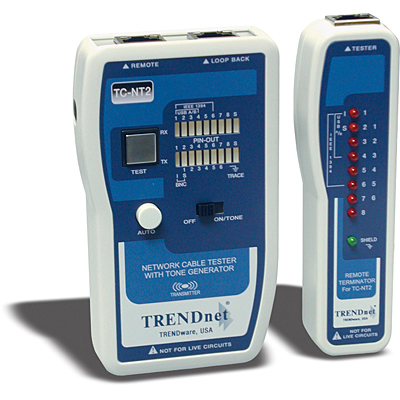
The Organizations that Set Cabling Standards
 The TIA (Telecommunications Industry Association) and the ISO (International Organization for Standardization) are the primary organizations that oversee the development of structured cabling standards for the industry. Committees formed by the IEEE (Institute of Electrical and Electronics Engineers) provide assistance through testing and setting performance specifications for various standards.
The TIA (Telecommunications Industry Association) and the ISO (International Organization for Standardization) are the primary organizations that oversee the development of structured cabling standards for the industry. Committees formed by the IEEE (Institute of Electrical and Electronics Engineers) provide assistance through testing and setting performance specifications for various standards.
Compliance with standards ensures the functioning of systems at specified levels, backward compatibility, and a greater selection of equipment will exist. General global recognition of standards permit utilizing equipment sourced from various countries inside computer systems. Requirements for the components of optical and copper cabling including cables, assemblies, connectors, cabling spacing and pathways, administration, field testing, and installation are standardized to make worldwide acceptance possible.
Technicians in North America typically use TIA standards, while the rest of the world uses ISO standards. Examples of organizations that set regional and national standards organizations are CENELEC (European Committee for Electrotechnical Standardization), CSA (Canadian Standards Association) and JSA (Japanese Standards Association). Their standards are generally compatible with TIA and ISO.
Different terminology used by TIA and ISO Associations sometimes cause confusion because they refer to the same item. For example, what the TIA terms as Cat5e is what ISO terms to be Class D. However, adherence to standards set by TIA and ISO ensure system cabling requirements are properly implemented in the categories below.
- Insertion Loss – Decrease of signal strength down the transmission line.
- Return Loss – Measurement of signal reflections on the cable.
- NEXT – Near End Crosstalk Loss due to signal coupling.
- Propagation Delay / Delay Skew – Elapsed time for signal to reach other end of cable or the delay between signal arrival at far end on slowest and fastest cable pairs.
- ACR – Difference between insertion loss and NEXT.
- ELFEXT – Identical to NEXT, but for cabling system’s far end.
- PSANEXT / PSAACRF – Power sum alien crosstalk at near end / Power sum alien crosstalk at far end.
Due to ever-increasing data rates, the efforts of the standards organizations are assuming greater importance in terms of ensuring proper system design.
Union Network Cabling
When your work requires a unionized cabling group, call on Progressive Office Inc. for your commercial Cat5e/6/6a and fiber cabling projects. Specializing in cabling for data, voice, security and even the latest WiFi and LiFi solutions. Phone: (202) 462-4290


 Testing always plays a vital role in the process of installing new
Testing always plays a vital role in the process of installing new